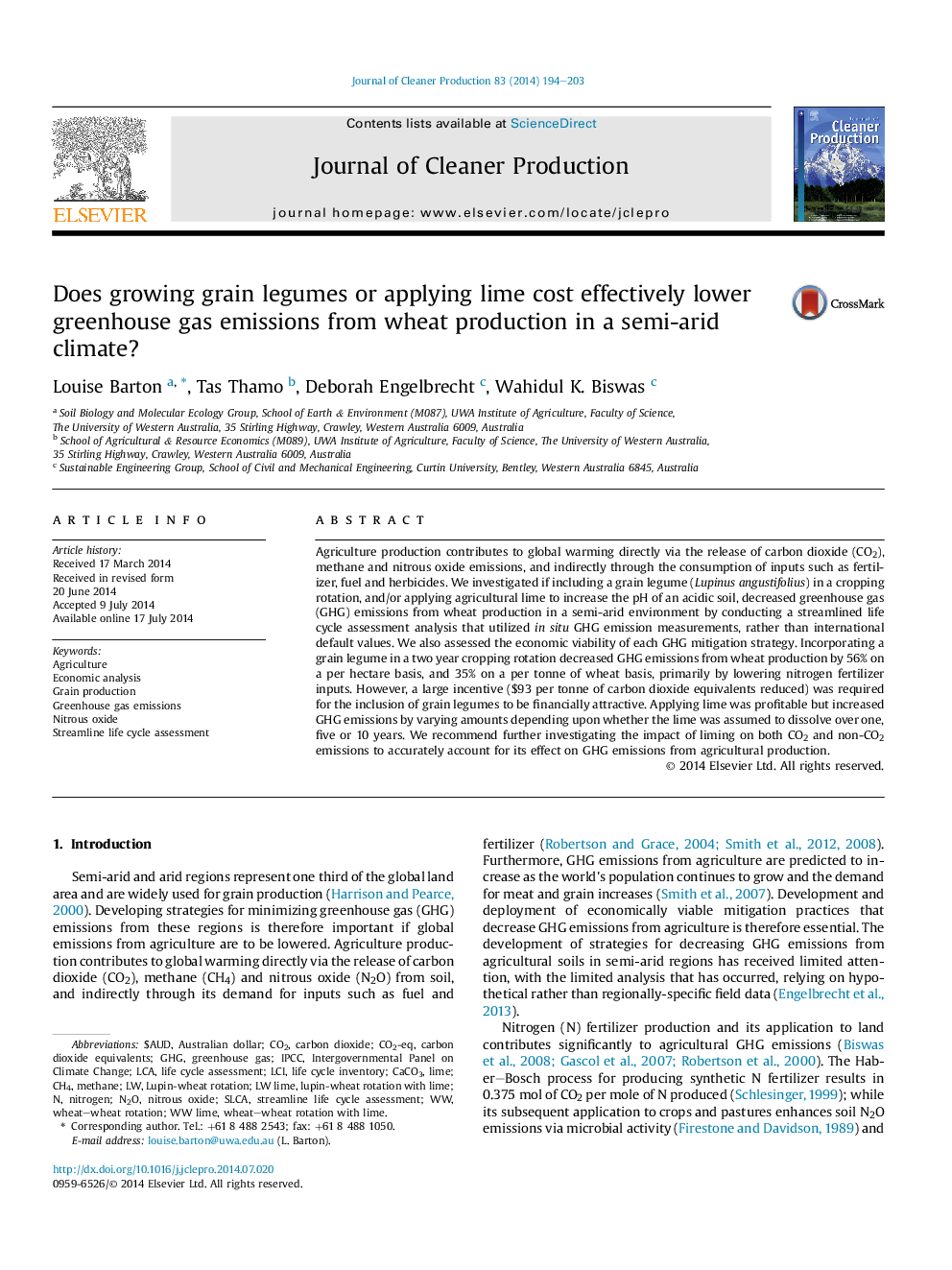| Article ID | Journal | Published Year | Pages | File Type |
|---|---|---|---|---|
| 8105404 | Journal of Cleaner Production | 2014 | 10 Pages |
Abstract
Agriculture production contributes to global warming directly via the release of carbon dioxide (CO2), methane and nitrous oxide emissions, and indirectly through the consumption of inputs such as fertilizer, fuel and herbicides. We investigated if including a grain legume (Lupinus angustifolius) in a cropping rotation, and/or applying agricultural lime to increase the pH of an acidic soil, decreased greenhouse gas (GHG) emissions from wheat production in a semi-arid environment by conducting a streamlined life cycle assessment analysis that utilized in situ GHG emission measurements, rather than international default values. We also assessed the economic viability of each GHG mitigation strategy. Incorporating a grain legume in a two year cropping rotation decreased GHG emissions from wheat production by 56% on a per hectare basis, and 35% on a per tonne of wheat basis, primarily by lowering nitrogen fertilizer inputs. However, a large incentive ($93 per tonne of carbon dioxide equivalents reduced) was required for the inclusion of grain legumes to be financially attractive. Applying lime was profitable but increased GHG emissions by varying amounts depending upon whether the lime was assumed to dissolve over one, five or 10 years. We recommend further investigating the impact of liming on both CO2 and non-CO2 emissions to accurately account for its effect on GHG emissions from agricultural production.
Keywords
Related Topics
Physical Sciences and Engineering
Energy
Renewable Energy, Sustainability and the Environment
Authors
Louise Barton, Tas Thamo, Deborah Engelbrecht, Wahidul K. Biswas,
